The automotive industry is poised for a thrilling year in 2026, with a host of new and redesigned vehicles promising cutting-edge technology, electrification, and refined performance. From sporty luxury sedans to family-oriented SUVs and high-performance electric vehicles, these models represent the next wave of innovation and style. Below are 15 of the most anticipated cars to watch for in 2026, complete with their standout features.
Barrett-Jackson is ready to thrill concert-goers with one of the hottest stars in country music, Cole Swindell, during the annual Rock The Block concert, January 16, 2026, at WestWorld of Scottsdale. The auction’s kickoff concert will open with singer-songwriter Chris Lane, followed by headlining artist Cole Swindell, who recently released his fifth studio album, “Spanish Moss.” Concert tickets start at $85 and go on sale Friday, July 18, at 10 a.m. MST.
“From Foreigner to Sammy Hagar and now a country music superstar, our Rock The Block concerts have become the ultimate kick-off for auction week in January,” said Craig Jackson, chairman and CEO of Barrett-Jackson. “This year, we couldn’t be more excited to welcome chart-topping country music artists, Cole Swindell and Chris Lane, to the stage to get us geared up for another incredible auction week at WestWorld of Scottsdale. They are among the most celebrated voices in country music today, and you’ll get to see them together at our Rock The Block concert in January.”
Cole Swindell has produced chart-topping hits like “She Had Me at Heads Carolina,” “Forever To Me,” “Chillin’ It,” “Single Saturday Night,” and more. With over 8 billion total global streams to date, Swindell is firmly established as a powerhouse in country music. A Georgia native, Swindell’s appearance at Rock The Block will follow his 2025 Happy Hour Sad Tour, which kicks off this September.
“There’s nothing that compares to the energy of a live crowd, and I am so excited to hit the stage during Barrett-Jackson’s Rock The Block concert this January,” said Swindell. “I have no doubt this show is going to be something special. I can’t wait to see y’all there and make it a night we’ll never forget.”
A North Carolina native, Chris Lane has stepped into a more grounded and personal era with his new album “Shade Tree,” which debuted with an impressive 1.65 million streams in its first week. With more than two billion career streams, Lane’s catalog includes hits like “Dancin’ In The Moonlight” with Lauren Alaina, “Howdy,” and “Stop Coming Over.” He’s earned nominations from the iHeartRadio Music Awards, ACM Awards, and Radio Disney Music Awards, as well as toured with Rascal Flatts, Florida Georgia Line, Brad Paisley, Dan + Shay and Kane Brown.
“Much like the diversity of our collector car dockets, our Rock The Block concerts bring in an incredible range of talent that showcase different sounds and stories across different genres,” said Steve Davis, president of Barrett-Jackson. “This year the talent on our stage will be extraordinary and our guests can expect an unforgettable experience filled with great music, energy and the kind of moments that make Barrett-Jackson the ultimate lifestyle experience.”
Rock The Block concert-goers will receive exclusive early access to the Barrett-Jackson auction site before it opens to the public and the opportunity to preview some of the world-class auction vehicles. Guests can begin the evening with a first look inside the Sponsor Pavilion, showcasing the latest vehicles and displays from leading automakers and enjoy drinks and a light bite to eat while viewing the auction’s star vehicles displayed in the North and South Showcase Pavilions that surround the auction arena.
Tickets for Rock The Block are on sale Friday, July 18, with reserved seating and hospitality packages in the Premium Hospitality Suite located in the Muscle Lounge – an incredibly intimate setting offering elevated views with food and beverage service.
Be a part of Barrett-Jackson’s online conversation with #BarrettJackson and #BJAC on Facebook, X, Instagram and YouTube.
Almost two years ago, AutoHunter featured a very unique 1970 Chevrolet Chevelle SS 454. One thing that was unusual was the C-pillar trim that generally was used on two-tone cars and vehicles ordered with a vinyl top, even though this Chevelle was monotone. The other special aspect of this Bow Tie was the color, something that was introduced for Chevelles in the middle of the model year—but only in Canada.
I was reminded of this car thanks to Adrian Clements, my Ford-loving friend whose videos I’ve occasionally featured here at The ClassicCars.com Journal. He showed me this newspaper clipping from the January 2, 1970 edition of the Windsor (Ontario) Star.
The new colors were Citrus Green (43), Nugget Gold (53), Sandpiper Beige (61), and Caramel Bronze (62). Both Citrus Green and Nugget Gold were regular-production (RPO) colors for the 1970 Camaro, with the latter known as Camaro Gold; all four hues were introduced to most Canadian full-size Chevrolets and Chevelles per the below marketing sheet.
Sandpiper Beige had been a 1970 Buick Riviera color that also was known as Sandalwood for the 1970 Oldsmobile Toronado; this color became RPO for 1971 for all Chevrolets save the Corvette, with assorted names for most car lines within GM. Nugget Gold had been an extra-cost color for 1970 Oldsmobiles (specified as “special-order”); this color was not carried over into 1971.
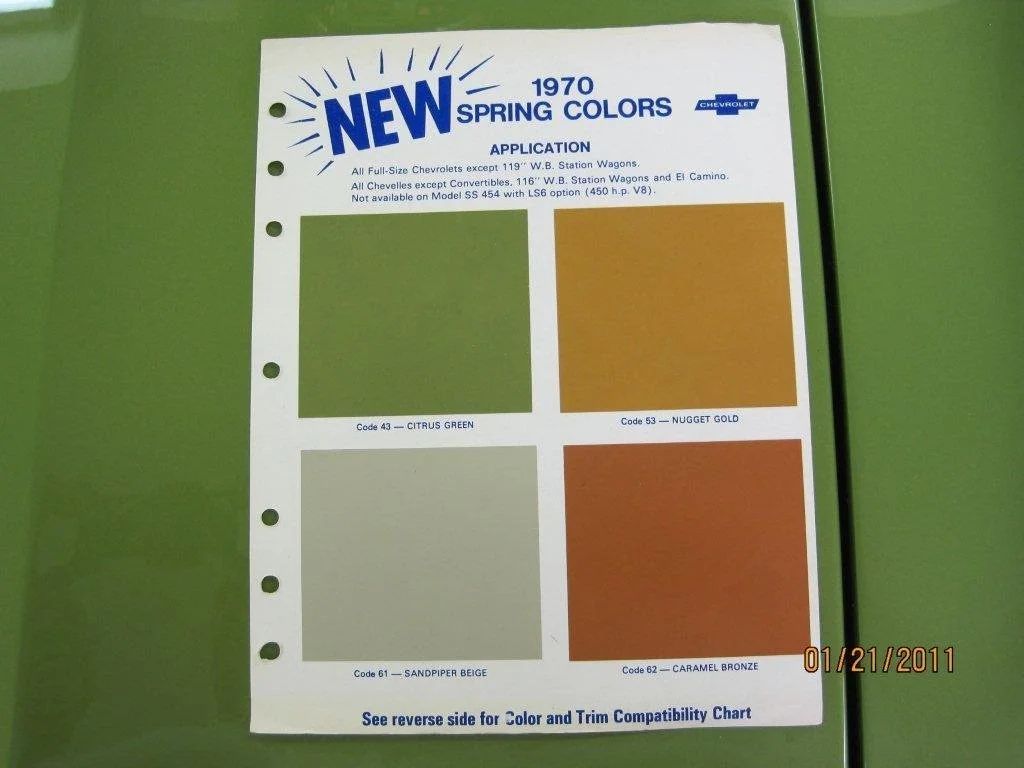
Caramel Bronze was a new color that appears to be more enigmatic, as I cannot find much information on this color at all. It’s listed on the 1970 Corvette color chip page, but production records show Corvette Bronze as a similar color that was utilized. On a hunch, I’m betting that Caramel Bronze was the color that became an RPO for most car lines within the 1971 GM lineup, with Chevrolet calling it Burnt Orange metallic.
As you can see from the news clipping, Canadian Pontiacs also were available with these mid-year colors, though several hues featured different names. Keylime Green and Coronado Gold were Firebird colors mainstreamed to other Canadian 1970 Pontiacs; Sandpiper Beige became Sandalwood for 1971 for all Pontiacs from Detroit, with Caramel Bronze possibly being 1971’s Canyon Copper.
The below chart gives an easy look on how Chevrolet and Pontiac (among others) handled these (Canadian) colors in 1970-71.
| 1970 Color Code | Brand | Name | Continued into 1971? |
| 43 | Chevrolet | Citrus Green | No |
| Pontiac | Keylime Green | No | |
| 53 | Chevrolet | Nugget Gold Camaro Gold |
No |
| Pontiac | Coronado Gold | No | |
| Oldsmobile | Nugget Gold | No | |
| 61 | Chevrolet | Sandpiper Beige | Sandalwood |
| Pontiac | Sandpiper Beige | Sandalwood | |
| Oldsmobile | Sandalwood | Sandalwood | |
| Buick | Sandpiper Beige | Sandpiper Beige | |
| 62 | Chevrolet | *Caramel Bronze | *Burnt Orange |
| Pontiac | *Caramel Bronze | *Canyon Copper | |
| Oldsmobile | N/A | Bittersweet Mist | |
| Buick | N/A | Bittersweet |
If you’re a knowledgeable type, able to sort this out beyond what has been done here, we would love to obtain your feedback.
I grew up in a Toyota family. For several years, my dad had a first-generation 4Runner. There was a time in my adolescence when both of my parents and my older brother drove Cressidas. A few years later, all three had 4Runners: my brother rocked a cool 1993 with a brush guard, aftermarket wheels and tires, and four-wheel drive; my mom had a ’98 Limited; and my dad drove a 2000 SR5 4X4 with the Sport Package.
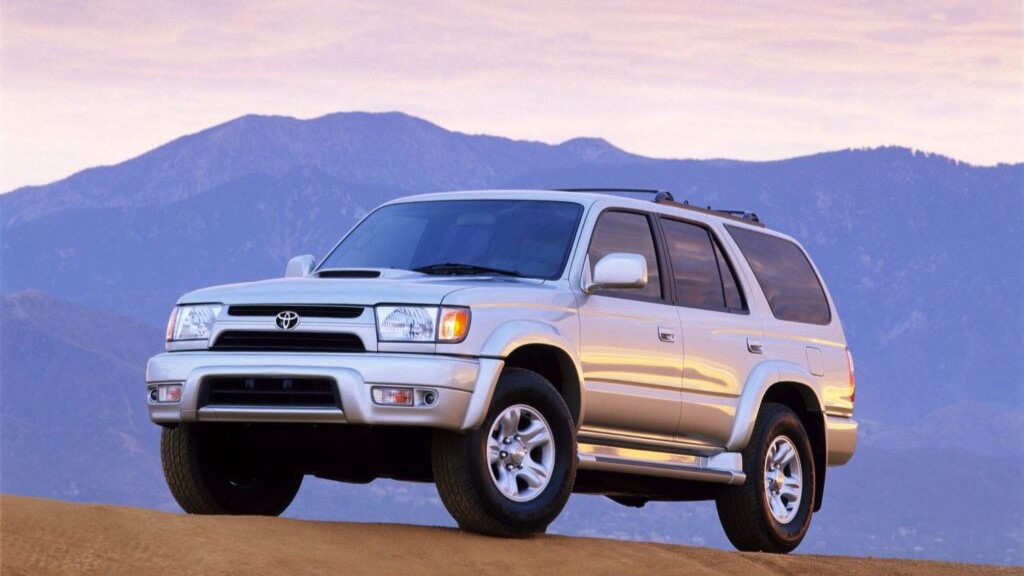
Despite all that potential for off-road adventures, my dad never took my brother and me to get some dirt under the tires. My brother also seemed to keep his 4Runner on paved roads too. It wasn’t until I was in college that I went off-road for the first time—in a Land Rover.
Two of my friends from high school, Evan and Megan, were in a relationship when they enrolled at UT Austin in the early 2000s and moved into a house not far from campus. To offset the cost of the mortgage, they took on roommates, Kristine and Ryan. One Saturday afternoon, I dropped by the house looking for Evan and, after knocking on the front door, I looked at the pair of 1980s Saab 900s in various states of disrepair in the driveway. Ryan answered and told me Evan wasn’t home. I didn’t really know much about Ryan because I hadn’t talked to him much before, but I did know that he drove a Land Rover Discovery. Shortly after I struck up a conversation about it, he surprised me by asking, “Do you want to drive it?” Without thinking, I immediately accepted his offer.
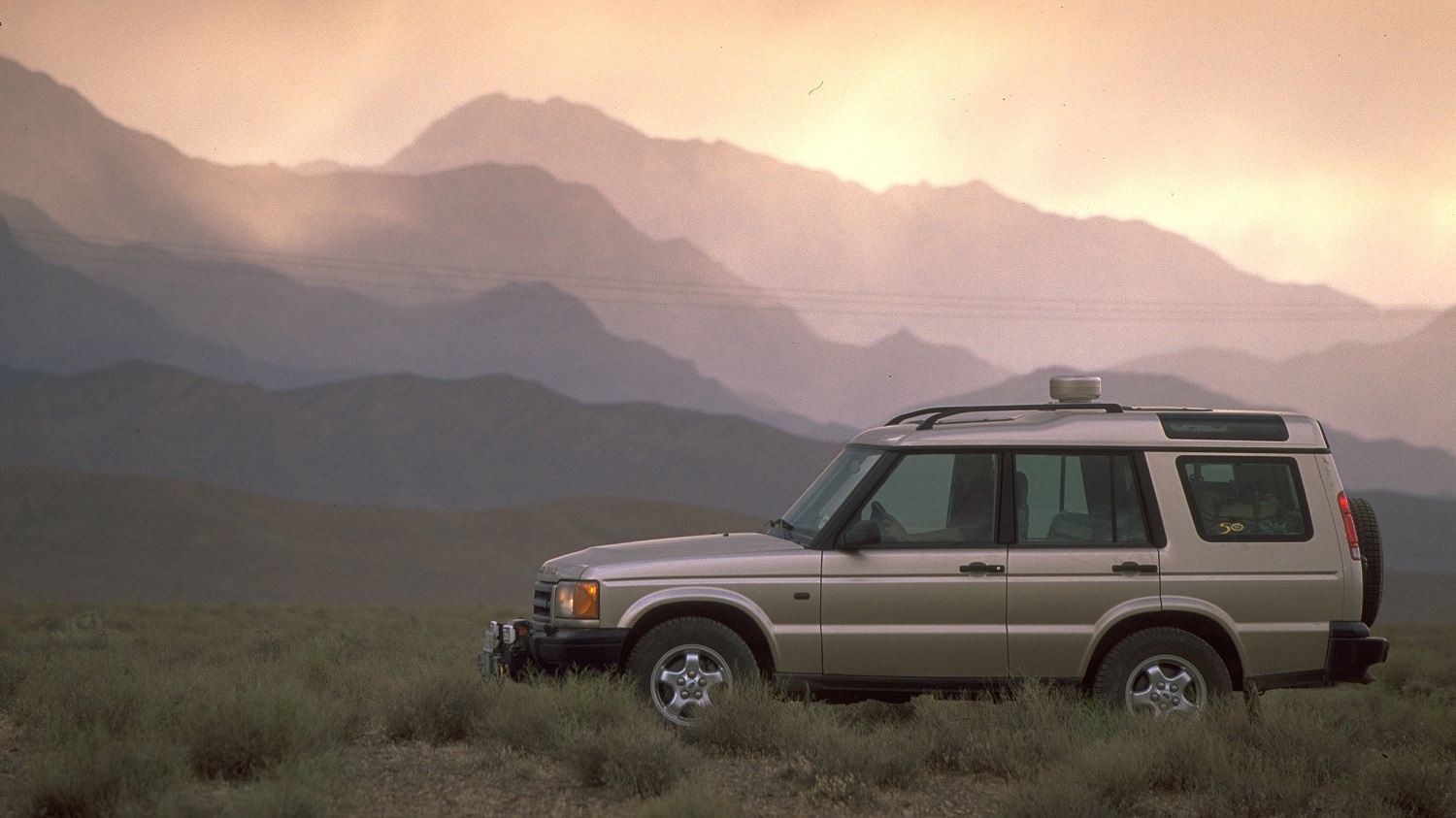
The timing of our excursion was perfect. A rainstorm had just passed through the area, leaving spots of mud in its wake. Ryan directed me to a nearby stretch of land where I could have some fun in his rig. He was brutally honest about how beat up it was and how many of its features didn’t work, but I didn’t care—I was thrilled to be driving a Land Rover in its natural environment (and no, I don’t mean a mechanic’s shop). It seems even the Disco’s carpeting had malfunctioned at one point in Ryan’s ownership because he had covered it with squares of artificial turf. That proved to be a wise decision because I didn’t realize the front windows were down until I bombed through a puddle and sent a spray of mud into various parts of the cabin.
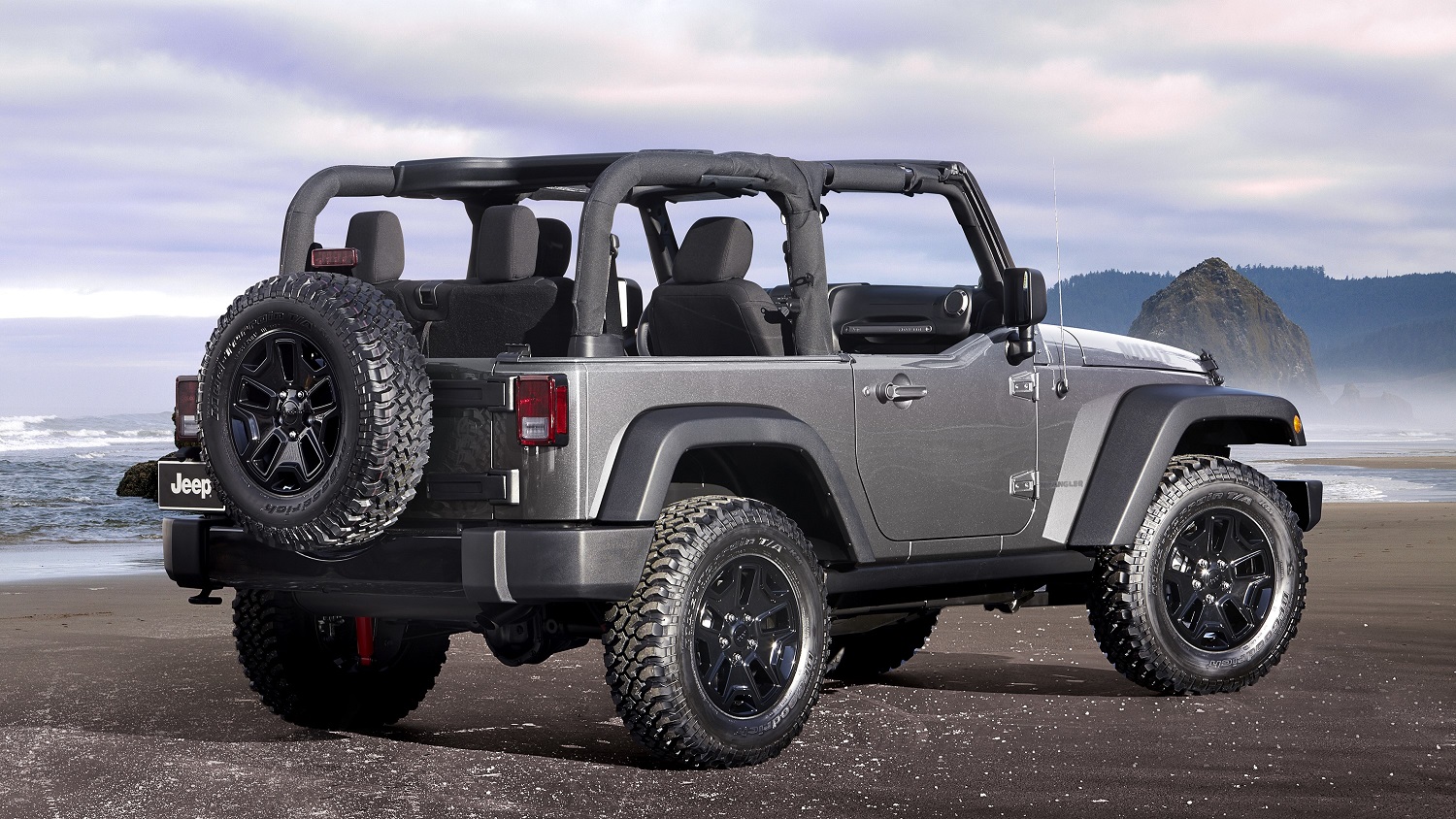
My first off-road experience was the perfect introduction to the hobby because it was simple and fun. Years later, I had the chance to pay it forward to my pal Dan and his then-girlfriend Sarah, both of whom had never gone wheeling. Once again, the timing worked out nicely, as Dan and Sarah were free the same weekend I had the keys to a 2015 Jeep Wrangler Willys Wheeler. They agreed to join me for a day at the Hidden Falls Adventure Park in Marble Falls, Texas, which I had recently discovered.
Our journey through the park started with some hillocks and mild ruts, the kind of stuff a Ford Crown Victoria can traverse. I knew if I was going to test the Wrangler, I needed to point its seven-slot grille toward more challenging terrain. Hidden Falls had five levels of difficulty but, given that I was in a press loaner, I figured it would be best to stick to the level 3 and below trails.
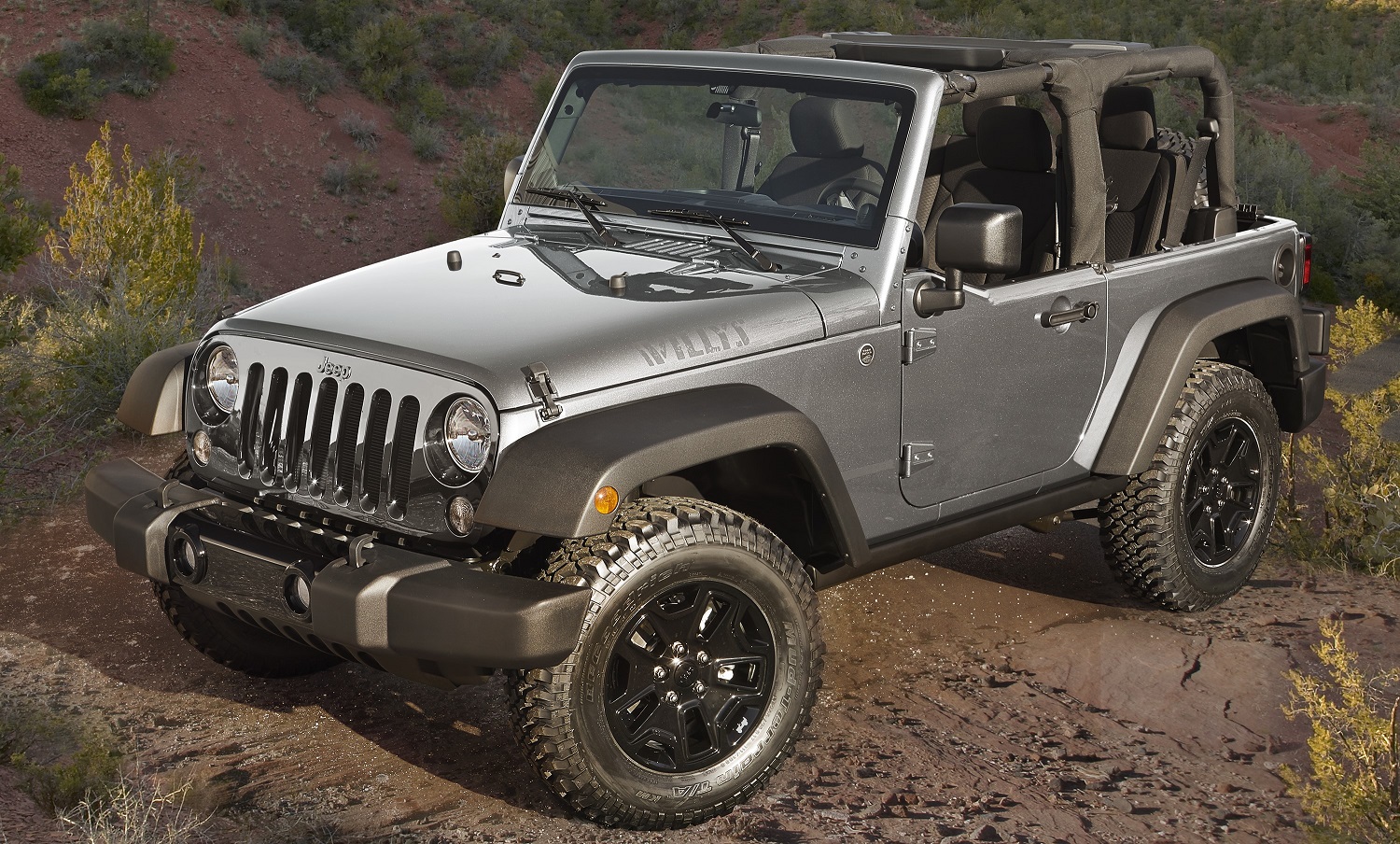
My understanding was that one of them would take us up a steep, rocky incline and we would reach the peak right by the fence line. When I reached the bottom of the path, I put the five-speed automatic into neutral, muscled the transfer case lever into 4L, then started inching upward. Sarah was riding in the back, so her best view was out of the sides of the removable hardtop. In the shotgun seat, Dan soon got two eyefuls of sky and tree limbs as we made our bumpy, jostling ascent. We reached the top, where I felt a sense of relief for not maiming the Wrangler—or my friends. But it was short-lived: the best way to get to where we needed to go next was the exact opposite of the way we had just come. If I made a mistake, Dan would have a front-row seat to his violent, rocky demise. We soon made it to the bottom unscathed—physically, at least. Neither Dan nor Sarah made a sound during our adventure, but afterward, Dan let me know he had a white-knuckle grip on the closest thing he could hold onto the entire time we were returning to level ground.
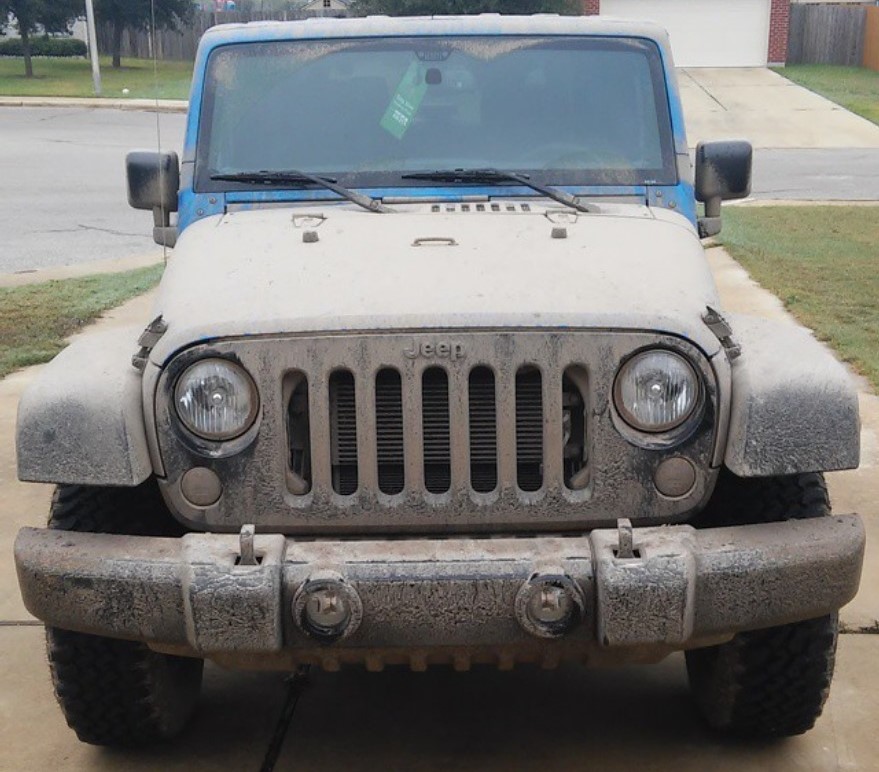
Back on one of the main park roads, we came across a large puddle of muddy water. Given the Jeep brand’s reputation and the Wrangler’s image as a rugged, go-anywhere vehicle, I thought it would only be right to drive the Willys Wheeler through it. A mist of brown muck washed over the front end and fountains of it blasted out of the front wheel wells as we erupted into a three-person chorus of cheers. Our excitement didn’t diminish with the two subsequent passes we made through the automotive mud bath (for research purposes, of course).
When it I dropped Dan and Sarah off at their apartment, Dan thanked me for bringing them along. One thing he’s never told me in the last 11 years is, “I forgive you for scaring the daylights out of me.” I guess he never will because that day is one that we both look back on fondly. As scary as Dan’s first off-road adventure may have been at one point (or two), he’ll never forget it. I know I’ll never forget mine.
Right now on AutoHunter, you can find this 1977 Lincoln Continental Mark V, which is running at no reserve. It’s equipped with a variety of power features, air conditioning, and a massive 460ci V8 mated to a Select-Shift three-speed automatic transmission. Finished in Cream with a Gold landau vinyl roof over a Gold and Cream Romano Velour cloth interior, this Continental Mark V comes from the private seller in Washington with a clear title.
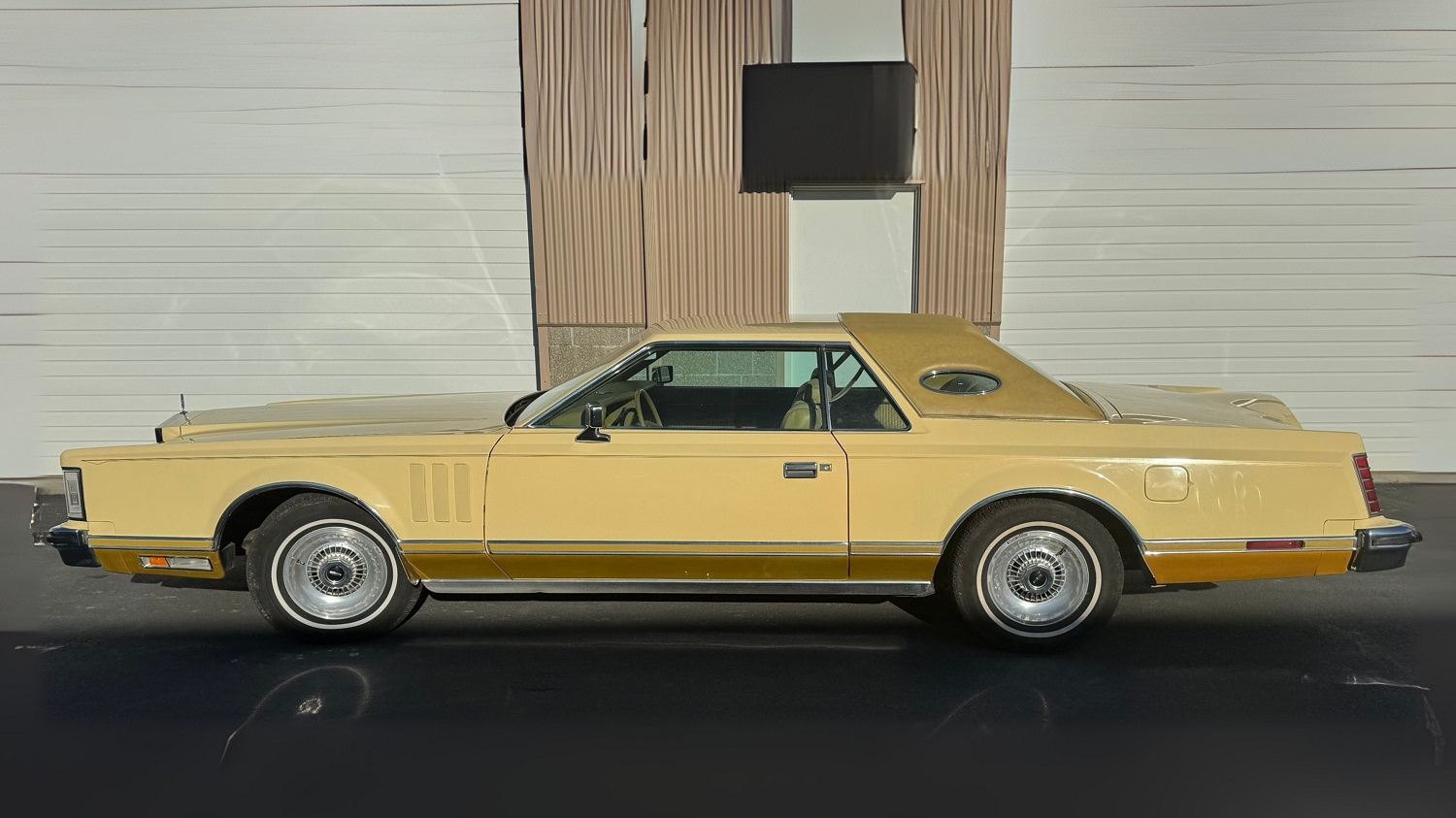
If this Lincoln’s nearly 20-foot length isn’t enough to get people’s attention, its color scheme of Cream with a Gold landau vinyl roof and Gold bodyside moldings definitely will. The other features, such as the chrome bumpers with guards, prominent grille, concealed headlights, front fender louvers, opera windows, and faux Continental kit, will keep eyes on this Mark V even longer.
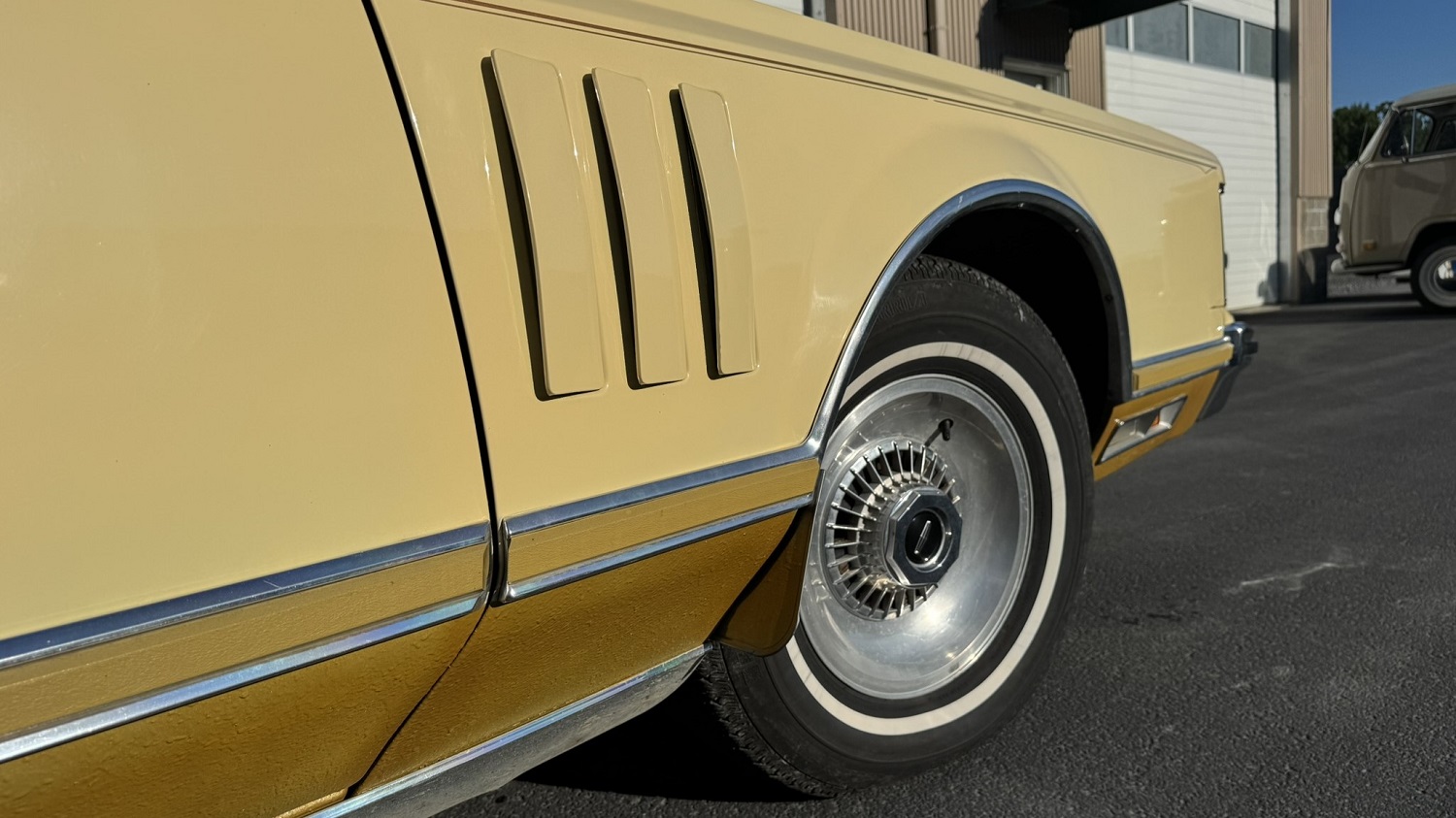
Even the 15-inch forged aluminum wheels offer a little something extra to see because they’re wrapped in whitewalls.
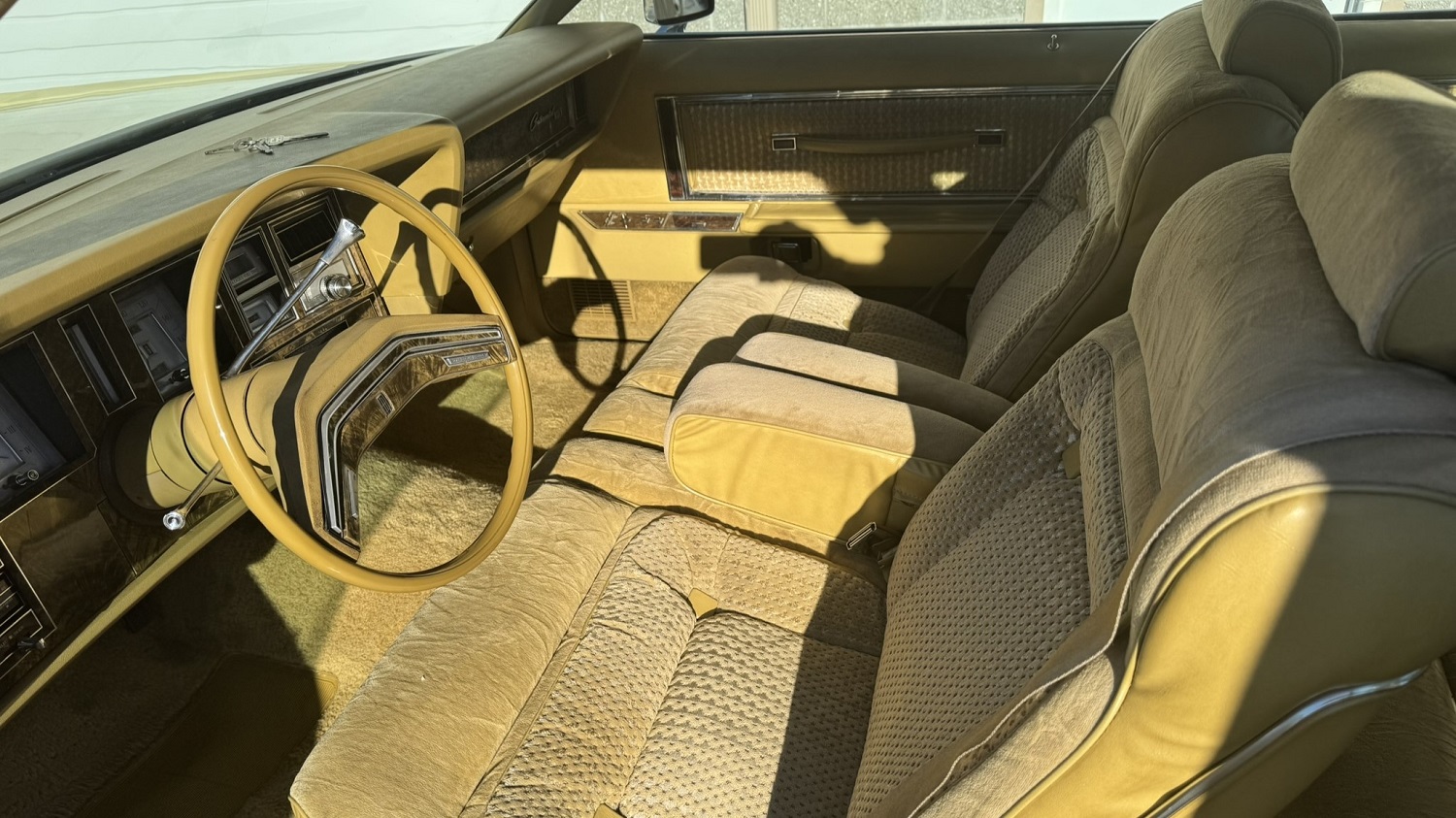
The interior is equally colorful—no plain black vinyl here. Instead, there’s a generous amount of Gold and Cream Romano Velour cloth as well as some walnut woodgrain trim. There are plenty of conveniences too, such as power Twin Comfort Lounge front seats, power windows and locks, power steering (connected to a new steering box), cruise control, air conditioning, and an AM/FM/cassette radio.
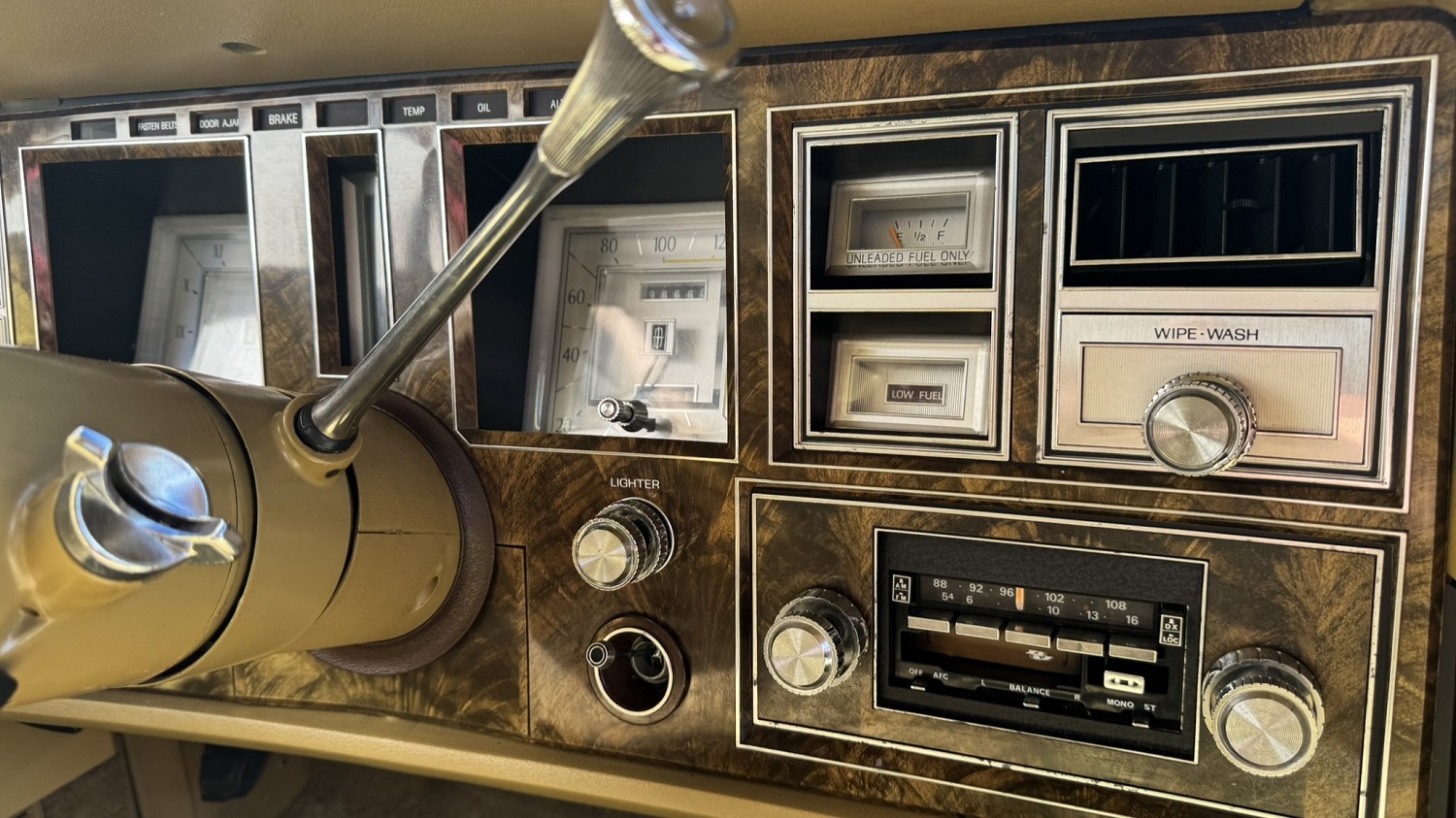
Those features have been enjoyed sparingly over the past 48 years because the odometer on this car shows only 98,660 kilometers (61,304 miles), which is the true mileage, according to the seller.
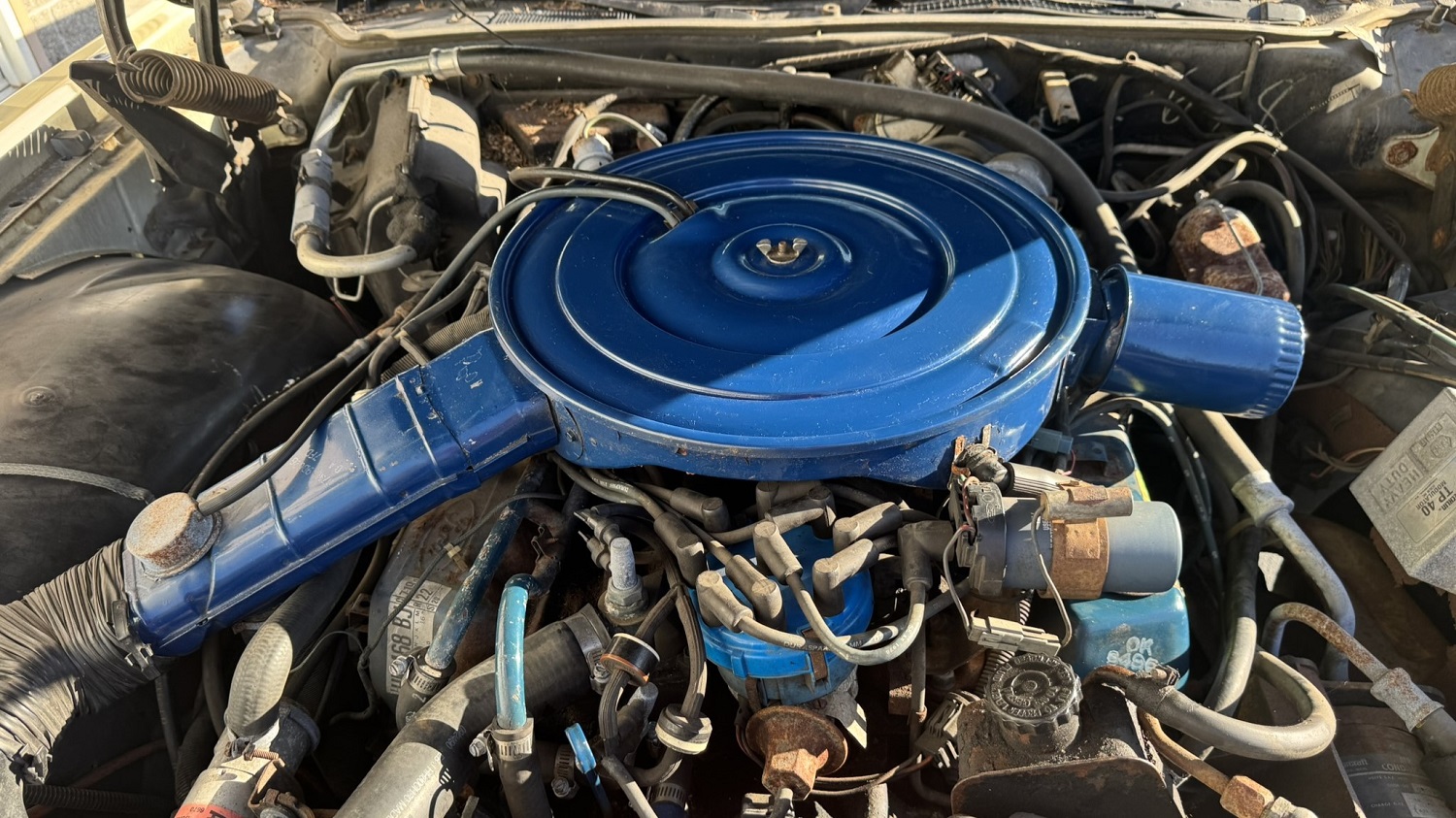
Despite this car’s low mileage, it has received several mechanical updates. The reportedly original 460ci V8 was recently tuned up and equipped with a rebuilt four-barrel carburetor, plus a new voltage regulator. water pump, and alternator. There’s also a new speedometer cable, which is connected to a 180-km/h (~111-mph) speedometer (which explains the DSO [District Sales Office] code of A6, which corresponds to Ford of Canada’s Western district). The massive engine sends its power to the road through a Select-Shift three-speed automatic and a 2.75:1 Traction-Lok rear end. Power four-wheel disc brakes with new pads and hoses act as an anchor for this majestic land yacht.
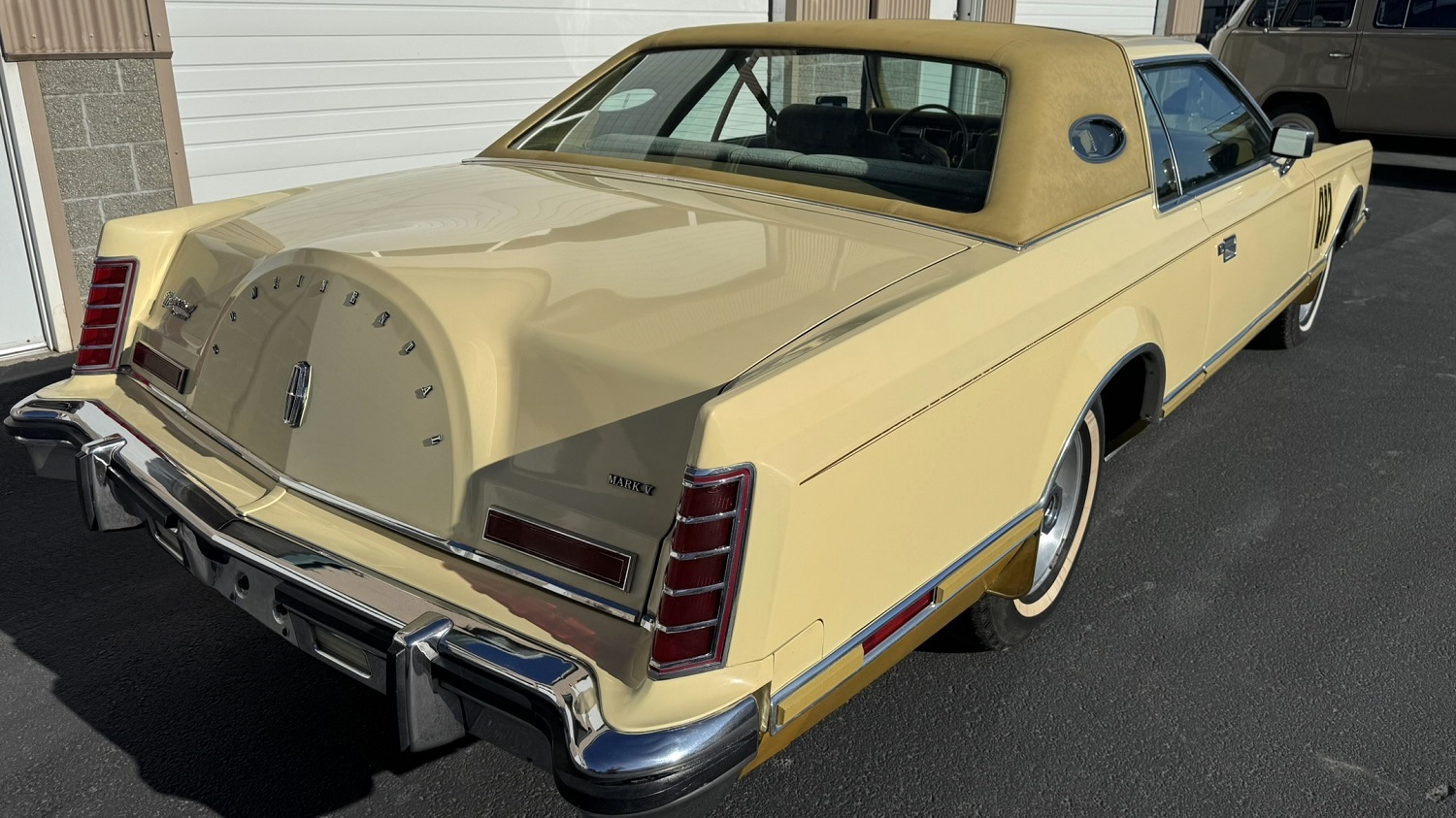
If you want to sail down the road in this 1977 Lincoln Continental Mark V, bid on it now. The no-reserve auction for it ends on Tuesday, July 22 at 12:30 p.m. (PDT).
Visit the AutoHunter listing for more information and a photo gallery
The connection to colors and gender is as interesting as the discussion of nature versus nurture. The Bentley Bentayga we recently wrote about mentioned the allure and revulsion men have with pink. In regards to pinks to which men gravitate, our Pick of the Day stands tall among Mopar men—it is known by the internal code of FM3 but, for our purposes, it is called Panther Pink. The 1970 Dodge Super Bee two-door hardtop listed for sale on ClassicCars.com by a dealership in Celeste, Texas, is painted in this very rare hue.
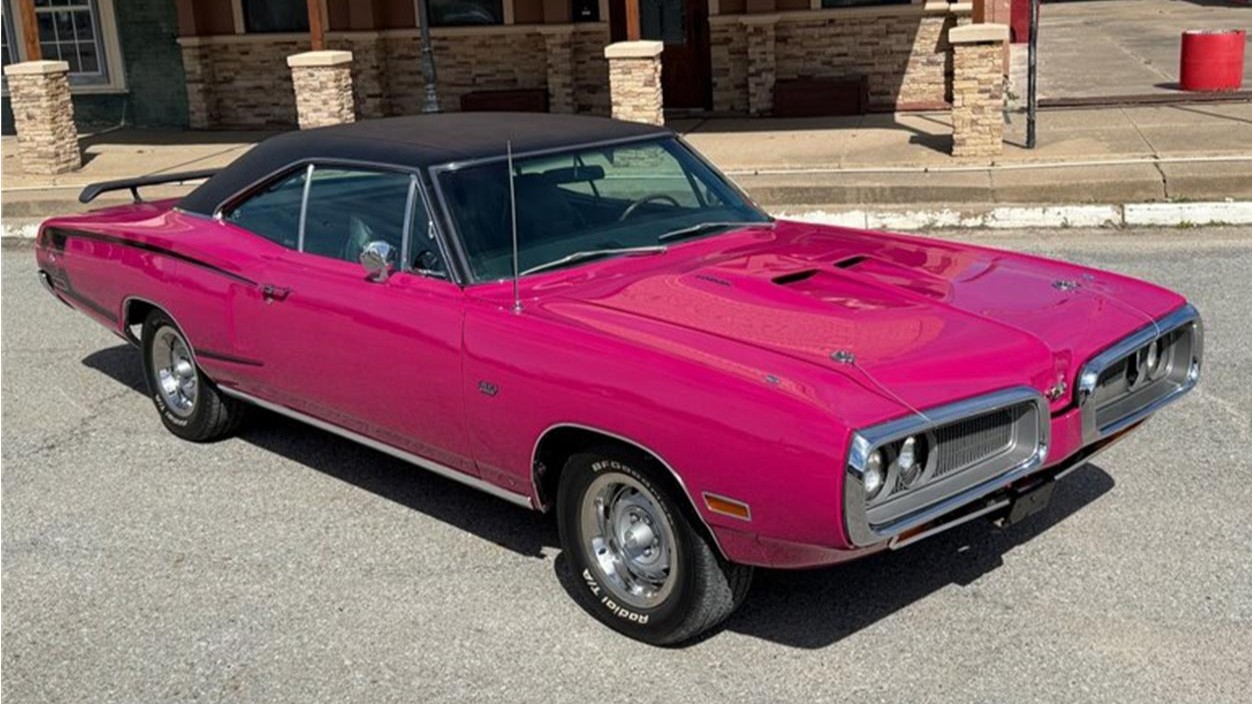
Sure, men are not averse to pink—visit a country club to bear witness—and sometimes there’s a reverse-masculinity effect with the color, as if “I’m so secure with my masculinity that I can rock it!” Was that the idea that the Chrysler Corporation had when it introduced FM3 in January 1970? Following Chrysler’s color coding methodology at the time, “F” stood for 1970, “M” was magenta, and “3” was the lightness of the color, with smaller numbers indicating a lighter shade. Of course, it wasn’t just men who bought cars, and that’s not to suggest the color was targeted to women, though there’s no marketing info I’m aware of that shows the target market. It would not be surprising to learn that most of the cars ordered in FM3 were sales bank cars or cars ordered by dealerships to tout the latest and greatest features from the Chrysler Corporation.
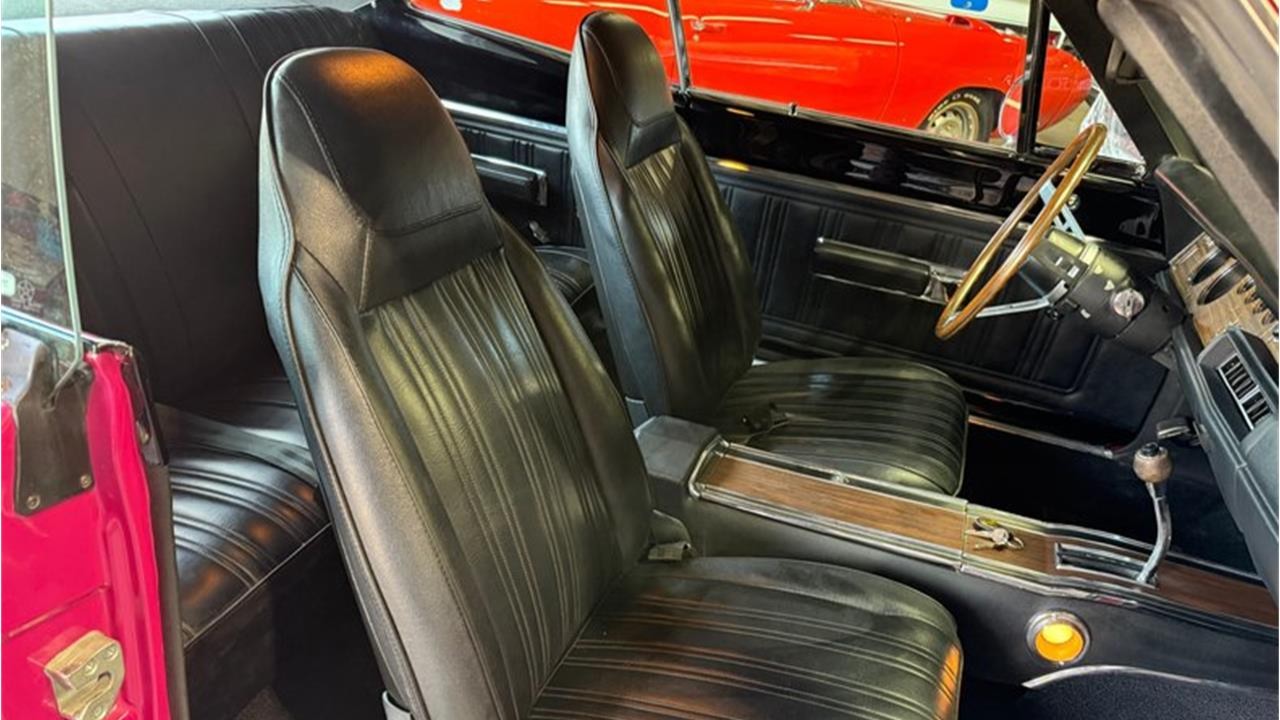
FM3 was given the name “Panther Pink” at Dodge, and “Moulin Rouge” (named after the famed French cabaret) at Plymouth. The color was available on A-body compacts, B-body intermediates, and E-body pony cars; it was not available on C-body full-size cars, though at least one is known to have been special-ordered. (There also was a Magenta offered in Australia in 1971-72, affectionately known as “Penta Magenta,” but accounts peg it as a slightly different color.)
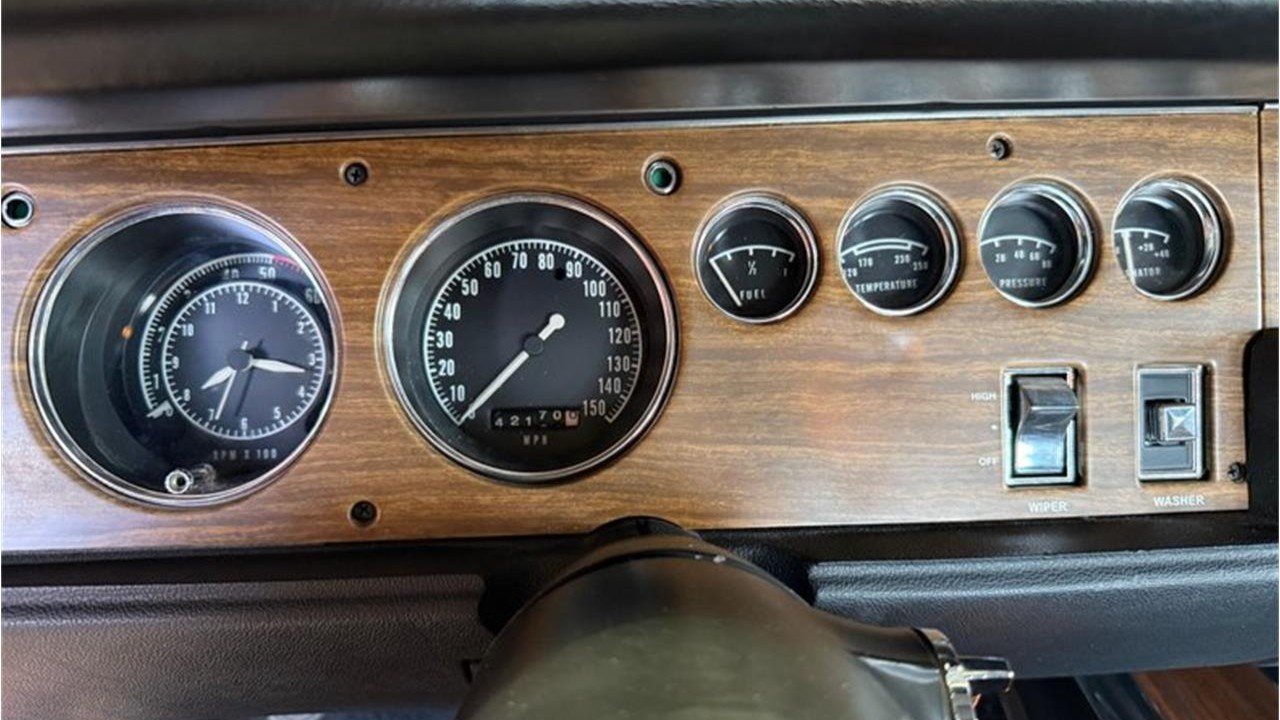
Nineteen seventy was an interesting model year for Dodge as the intermediate Coronet was in the final year of a three-year cycle. Rather than spruce up the Coronet for one more model year, Dodge restyled it with an odd front end that employed a loop bumper that had been taking hold at the division; also new was more prominent Coke-bottle rear fenders. For the Scat Pack Coronets, the Super Bee employed one of two striping choices, with a “C-stripe” being a new addition to the traditional Bumble Bee; for the Coronet R/T, the formerly optional M46 simulated brake scoops were now standard, and it was no longer available as an option for the Super Bee.
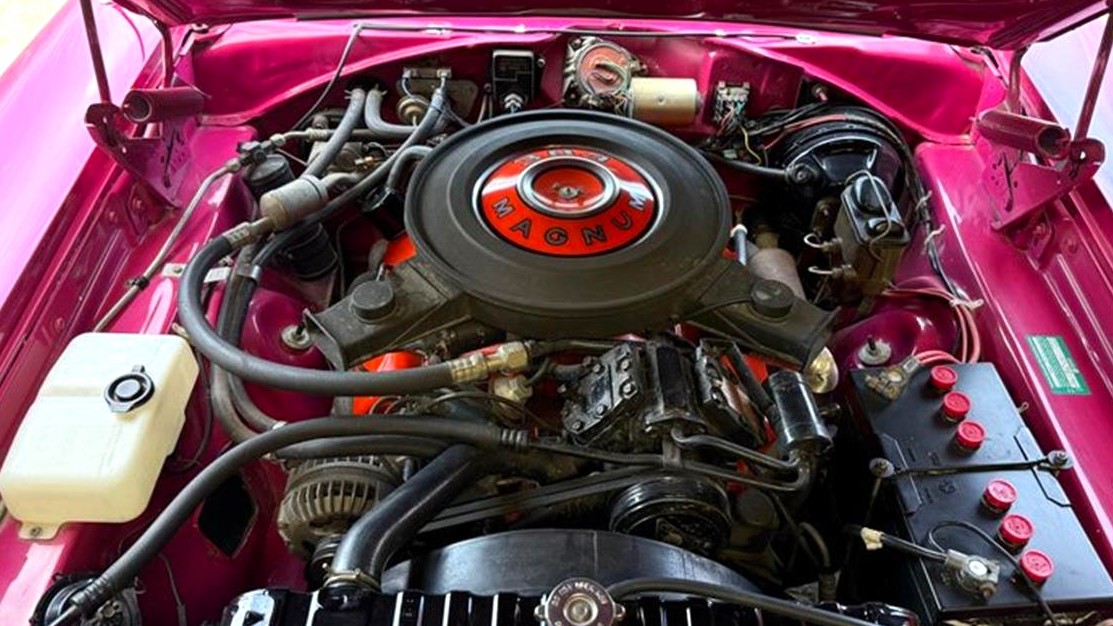
The Super Bee continued to feature a standard 335-horsepower 383, but now a three-speed manual transmission replaced the four-speed that had been standard since 1968. This downgrade kept the creeping base price palatable to the youths bagging groceries. The 440 Six Pack returned, now a conventional engine option instead of the maxed-out A12 package introduced mid-year 1969. Of course, the 426 Hemi remained the top option.
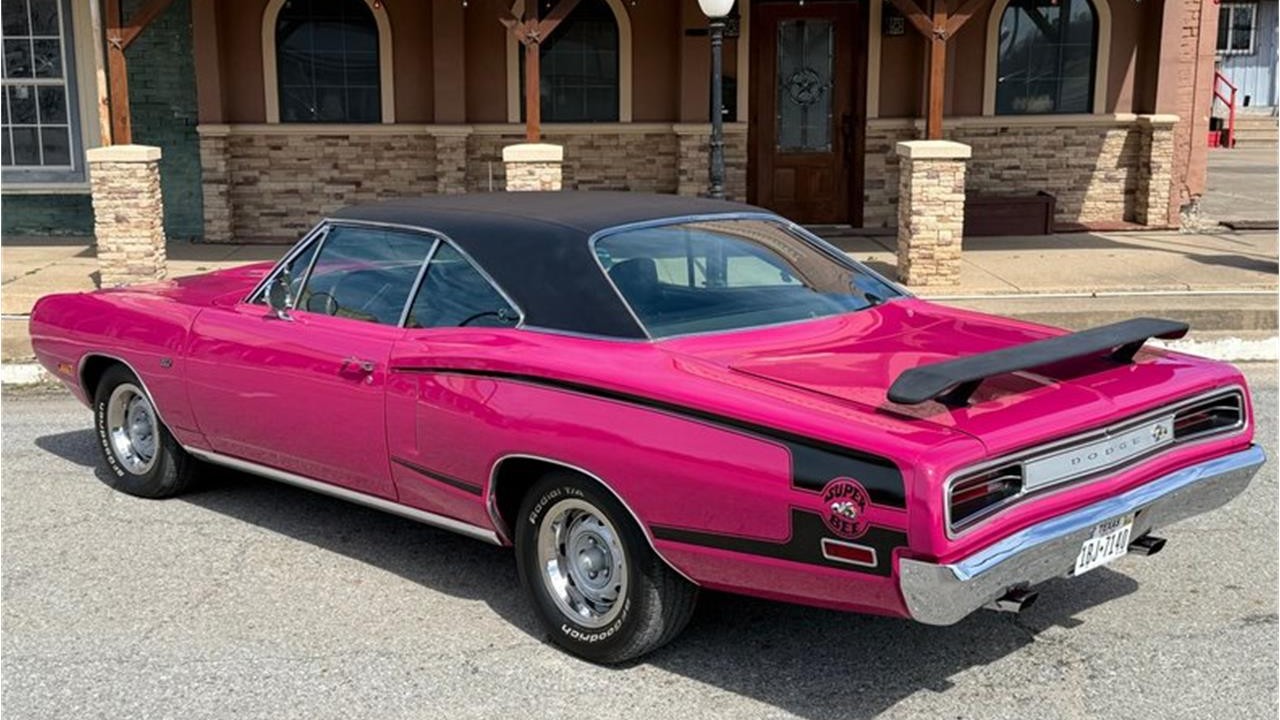
This rotisserie-restored 1970 Dodge Super Bee two-door hardtop is one of 40 U.S.-spec cars painted Panther Pink from the factory. It is complemented by a black vinyl top and “V6X” longitudinal side stripes (the C-stripe that was added for 1970, as mentioned above). Other features include black interior with front bucket seats, console, automatic, air conditioning, and power steering and brakes. I spy a tachometer, Rallye wheel, remote driver-side mirror, AM radio, and rear spoiler, the latter appearing to have been added. “Original fender tag is intact,” claims the seller. “Great-running and -driving car—ready to cruise!”

While it may be sexist to suggest this is a car for a man who’s secure with himself, what’s truly worth pointing out is that any FM3 Mopar will command a premium—this fuchsia is the color of gold among Mopar fans. To be tickled pink, it will cost you $128,500.
Click here to view this Pick of the Day on ClassicCars.com
Cross-country road trips are the ultimate test of a vehicle’s endurance.
A car that can handle this journey year after year must offer more than just comfort—it needs proven reliability, rugged durability, and minimal maintenance demands.
When traveling thousands of miles across varied terrains and climates, you want a vehicle that won’t let you down in the middle of nowhere.
According to the Consumer Reports, consistently reliable vehicles save owners time, money, and stress over their lifespan.
Choosing a car known for longevity ensures peace of mind, making every journey—from the first to the tenth—just as enjoyable and worry-free as the last.
In a world where cars are often seen as disposable, some vehicles rise above as true legends of longevity. These high-mileage heroes are celebrated by mechanics and drivers alike for their ability to endure hundreds of thousands of miles with remarkable reliability.
Reliability and staying power aren’t just about convenience—they’re a testament to thoughtful engineering and consistent quality. Cars that routinely hit the 200,000-mile mark (and beyond) represent smart investments for drivers who prioritize durability and low maintenance costs.
Whether you’re a daily commuter or an adventurous road tripper, these vehicles have proven their worth time and again. As Consumer Reports notes, certain makes and models consistently outlast the competition, earning their reputation as the true workhorses of the road.
European automotive engineering stands as a global benchmark for durability and long-lasting performance. From the cobblestone streets of Italy to the autobahns of Germany, certain vehicles have earned a reputation for outlasting not just their competitors, but often their own drivers. Meticulous craftsmanship, rigorous testing, and a relentless pursuit of quality have given rise to cars that become family heirlooms.
The idea of a car outliving its original owner may sound mythical, but for some European marques, this is a well-documented reality. These vehicles are not just modes of transport—they are testaments to engineering excellence and timeless reliability Top Gear.
Some vehicles don’t just outlast trends—they defy the limits of longevity, racking up 500,000 miles or more with remarkable ease. These automotive legends aren’t simply the result of luck. Their reputation for enduring mile after mile stems from exceptional engineering, thoughtful design, and relentless reliability.
Of course, owner diligence plays its part. Regular maintenance, timely repairs, and a bit of mechanical sympathy can mean the difference between a scrap heap and a six-figure odometer.
In this article, we’ll spotlight the standout models that have proven, time and time again, that with the right care, hitting the half-million-mile mark isn’t just possible—it’s expected. Get ready to meet the true marathoners of the road.
